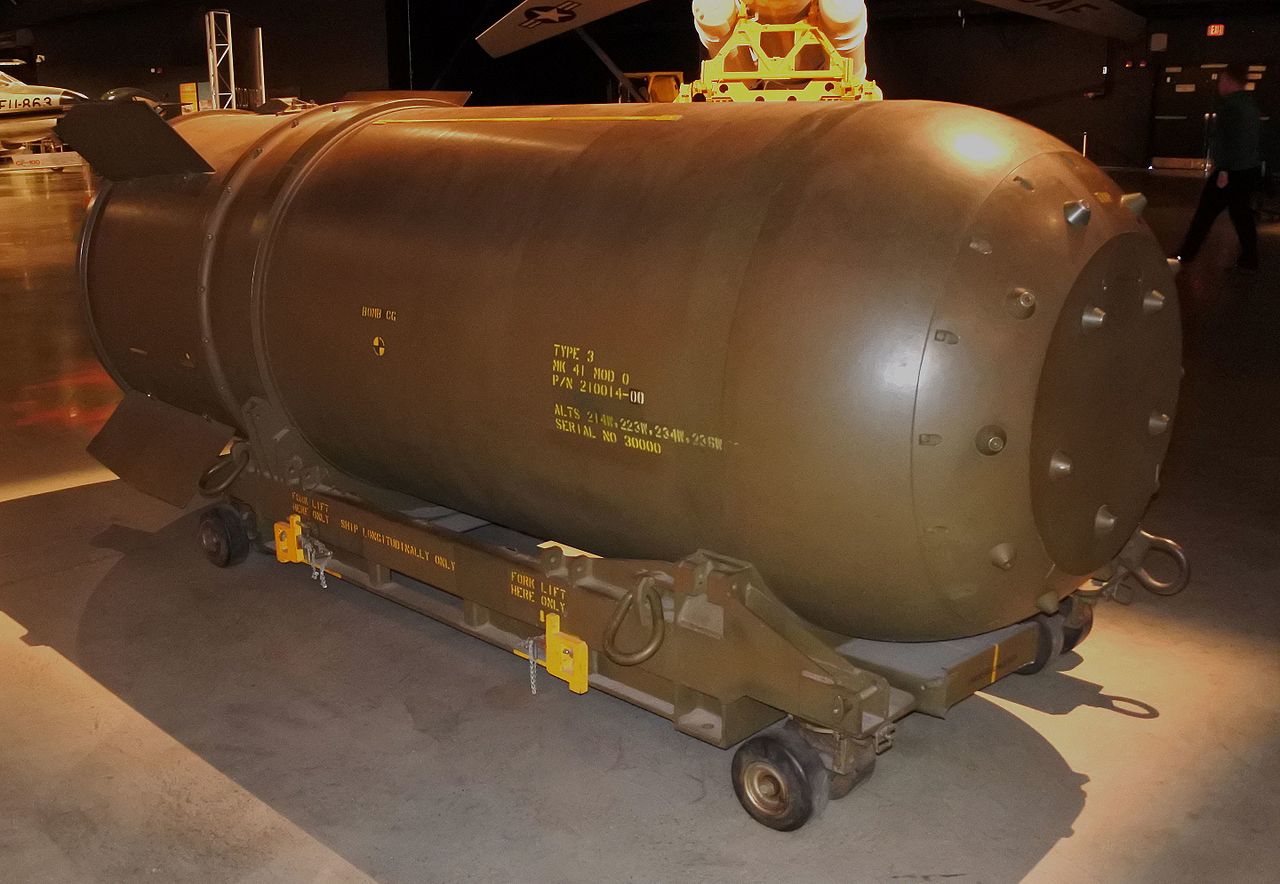- The B-41 hydrogen bomb: The most powerful weapon ever created by the US, with a maximum yield of 25 megatons, or equivalent to 25 million tons of TNT. It was deployed from 1960 to 1976 and could be delivered by bombers or missiles.
- The Tsar Bomba: The most powerful nuclear weapon ever detonated, with a yield of 50 megatons, or equivalent to 50 million tons of TNT. It was tested by the Soviet Union in 1961 and had a blast radius of 35 kilometers.
- The P-270 Moskit: A supersonic ramjet-powered cruise missile that can travel at speeds of up to Mach 3, or three times the speed of sound. It was developed by Russia and can carry a nuclear or conventional warhead. It is designed to evade anti-missile systems and strike naval targets.
- The Trident II D5 SLBM: A submarine-launched ballistic missile that can carry up to eight nuclear warheads, each with a yield of 475 kilotons, or equivalent to 475,000 tons of TNT. It was developed by the US and has a range of over 11,000 kilometers. It is currently deployed on US and UK submarines.
- The MIRV: A multiple independently targetable reentry vehicle that can carry several nuclear warheads on a single missile. Each warhead can be aimed at a different target and can maneuver to avoid interception. It was developed by the US and the Soviet Union during the Cold War and is still in use by some countries today.
- The MOAB: The Massive Ordnance Air Blast, also known as the Mother Of All Bombs, is the largest conventional bomb in the US arsenal, with a weight of 9,800 kilograms and a blast radius of 150 meters. It was first used in combat in 2017 against ISIS targets in Afghanistan.
- The FOAB: The Father Of All Bombs, also known as the Aviation Thermobaric Bomb of Increased Power, is the largest conventional bomb in the Russian arsenal, with a weight of 7,100 kilograms and a blast radius of 300 meters. It was tested in 2007 and is claimed to be four times more powerful than the MOAB.
- The Tomahawk cruise missile: A long-range subsonic cruise missile that can carry a nuclear or conventional warhead. It was developed by the US and has a range of over 2,500 kilometers. It can be launched from ships, submarines, or aircraft and can fly low to avoid detection and strike with high accuracy.
- The Kalibr cruise missile: A long-range supersonic cruise missile that can carry a nuclear or conventional warhead. It was developed by Russia and has a range of over 2,000 kilometers. It can be launched from ships, submarines, or aircraft and can fly low to avoid detection and strike with high accuracy.
- The AGM-114 Hellfire: An air-to-surface missile that can carry a high-explosive anti-tank or thermobaric warhead. It was developed by the US and has a range of up to 8 kilometers. It can be launched from helicopters, drones, or fixed-wing aircraft and can strike with high precision.
- The RPG-7: A shoulder-fired rocket-propelled grenade launcher that can fire various types of grenades, including anti-tank, anti-personnel, thermobaric, or fragmentation. It was developed by the Soviet Union and has a range of up to 500 meters. It is widely used by various armed groups around the world.
- The AK-47: A gas-operated assault rifle that fires 7.62×39mm rounds. It was developed by the Soviet Union and has an effective range of up to 400 meters. It is one of the most widely used firearms in the world due to its reliability, durability, simplicity, and low cost.
- The M2 Browning: A heavy machine gun that fires .50 BMG rounds. It was developed by the US and has an effective range of up to 2 kilometers. It is mounted on vehicles, aircraft, boats, or tripods and can be used against infantry, vehicles, buildings, or aircraft.
- The GAU-8 Avenger: A rotary cannon that fires 30×173mm rounds at a rate of up to 4,200 rounds per minute. It was developed by the US and is mounted on the A-10 Thunderbolt II attack aircraft. It is designed to destroy tanks, armored vehicles, bunkers, or other ground targets.
- The Mk 19 grenade launcher: An automatic grenade launcher that fires 40×53mm grenades at a rate of up to 400 rounds per minute. It was developed by the US and has an effective range of up to 2 kilometers. It can be mounted on vehicles, tripods, or boats and can be used against infantry, vehicles, or buildings.
Facebook Comments


































